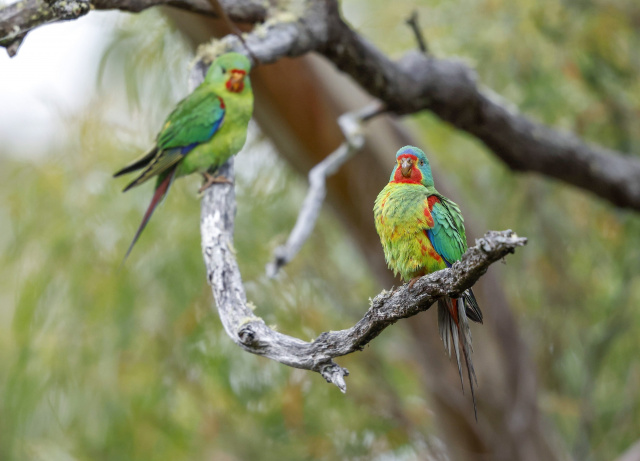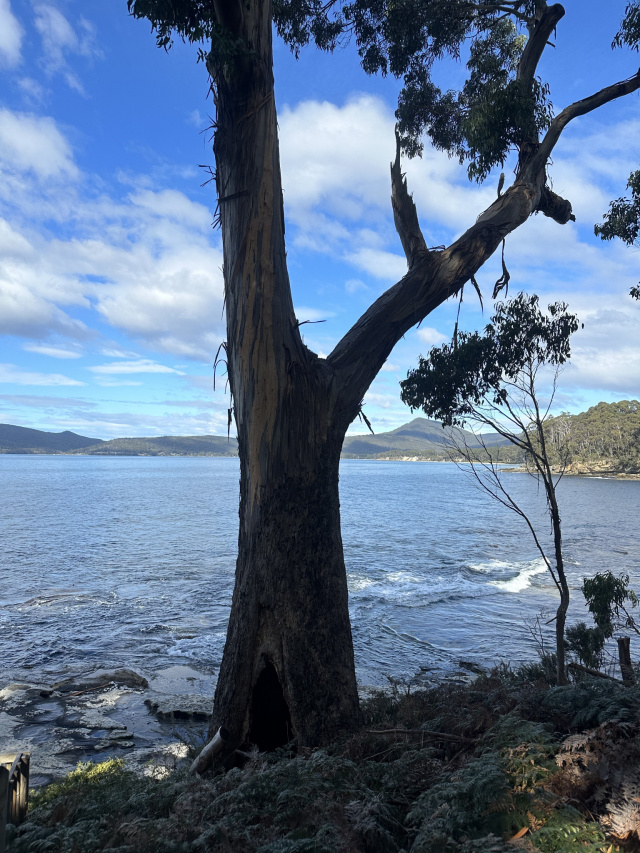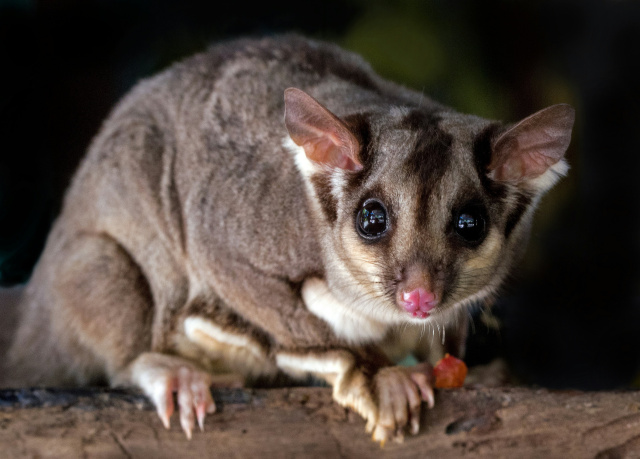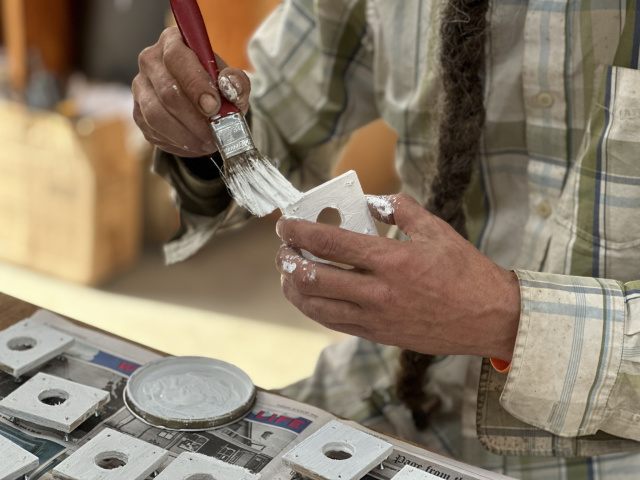We've been working on the Swift Parrot recovery team for a number of years now, and working to identify some of the key threats and risks to the parrot.
One of those threats is their population number. It is estimated there's about 500 to 750 individuals in the wild. That is an estimate. It is very hard to track them, because of their migratory nature, and the fact that they move around so quickly, and it's very hard to monitor them in such a wide distribution range. Recent research through the Australian National University, was a population viability analysis on the species. There is an estimate that within 11 years, the population could further decrease by 92%. That is almost extinction.
Cover Image: Hansons Beach, Bruny Island, Dan Broun

This is not only because it has the habitat that the Swift Parrots require each year to produce their two or three young in a nest in their hollows, it is also an island that is free of the Sugar Glider – a key introduced predator for the bird. The available habitat, and that expansive habitat, that expansive forest remnant habitat, is really important for those Swift Parrots. They breed in the hollows, and then they move about, in a 9-10 kilometre range, in search for blossom, because they also are feeding while they're raising their chicks.
They need that expansive habitat. Where it is fragmented on what we call mainland Tasmania, due to clearing, forestry, agriculture, illegal firewood collection, this all has a really big impact. Forestry practices, and areas around Swift Parrot habitat that are removed reduces the available breeding sites.

The Sugar Glider was introduced into Tasmania with our European settlers. They are cute and furry and cuddly, but they're also predators. They are omnivorous and they will directly feed on the eggs of Swift Parrots in their hollows. They will kill the chicks and they'll also kill the females on the nest. So because there are no sugar gliders on Bruny, Bruny Island is just so important for the species.

Because what they do, every year they go to different places to nest on the east coast of Tasmania, but some of those areas have high glider populations. There could be a correlation between more gliders and more disturbed forests, such as forestry or illegal firewood collection or clearing, which means that there's an increased pressure, and the dynamics, the balance of the ecosystem has really tipped in the favour of the Sugar Gliders and not the Swift Parrots.
So the work that is going on on Bruny to protect the existing habitat, and long-term in perpetuity private conservation, through a lot of the partners on the island, is extremely important. Protecting or providing artificial nest sites or protecting their existing native hollows is really important. Reducing forestry impacts around their breeding and foraging areas is really important and preserving those mature trees. So we look at those interventions needed to act quickly to recover the species at the legislative level, but also at the on-ground grass-roots level.


Lyndel Wilson
We've been working on the Swift Parrot recovery team for a number of years now, and working to identify some of the key threats and risks to the parrot.
One of those threats is their population number. It is estimated there's about 500 to 750 individuals in the wild. That is an estimate. It is very hard to track them, because of their migratory nature, and the fact that they move around so quickly, and it's very hard to monitor them in such a wide distribution range. Recent research through the Australian National University, was a population viability analysis on the species. There is an estimate that within 11 years, the population could further decrease by 92%. That is almost extinction.
Cover Image: Hansons Beach, Bruny Island, Dan Broun

This is not only because it has the habitat that the Swift Parrots require each year to produce their two or three young in a nest in their hollows, it is also an island that is free of the Sugar Glider – a key introduced predator for the bird. The available habitat, and that expansive habitat, that expansive forest remnant habitat, is really important for those Swift Parrots. They breed in the hollows, and then they move about, in a 9-10 kilometre range, in search for blossom, because they also are feeding while they're raising their chicks.
They need that expansive habitat. Where it is fragmented on what we call mainland Tasmania, due to clearing, forestry, agriculture, illegal firewood collection, this all has a really big impact. Forestry practices, and areas around Swift Parrot habitat that are removed reduces the available breeding sites.

The Sugar Glider was introduced into Tasmania with our European settlers. They are cute and furry and cuddly, but they're also predators. They are omnivorous and they will directly feed on the eggs of Swift Parrots in their hollows. They will kill the chicks and they'll also kill the females on the nest. So because there are no sugar gliders on Bruny, Bruny Island is just so important for the species.

Because what they do, every year they go to different places to nest on the east coast of Tasmania, but some of those areas have high glider populations. There could be a correlation between more gliders and more disturbed forests, such as forestry or illegal firewood collection or clearing, which means that there's an increased pressure, and the dynamics, the balance of the ecosystem has really tipped in the favour of the Sugar Gliders and not the Swift Parrots.
So the work that is going on on Bruny to protect the existing habitat, and long-term in perpetuity private conservation, through a lot of the partners on the island, is extremely important. Protecting or providing artificial nest sites or protecting their existing native hollows is really important. Reducing forestry impacts around their breeding and foraging areas is really important and preserving those mature trees. So we look at those interventions needed to act quickly to recover the species at the legislative level, but also at the on-ground grass-roots level.

You might like...

Love of Bruny

Protecting Bruny's beach-dwellers

Bruny Island nesting box project

Threatened Species on Bruny Island
Newsletter
Sign up to keep in touch with articles, updates, events or news from Kuno, your platform for nature
